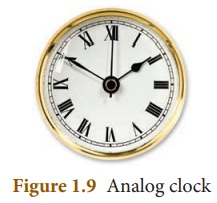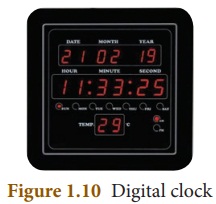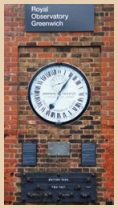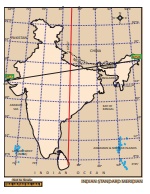Measurement | Chapter 1 | 8th Science - Types of clock | 8th Science : Chapter 1 : Measurement
Chapter: 8th Science : Chapter 1 : Measurement
Types of clock
Clocks
Clocks are used to measure time
intervals. So many clocks are being used from the ancient time. Scientists have
modified the mechanism of the clocks everytime to obtain accuracy.
A. Types of clock
based on display
There are two types of clocks based
on display. They are:
1. Analog clocks
2. Digital clocks
1. Analog clocks
Analog clocks look like a classic
clock. It has three hands to show the time.
Hours hand
It
is short and thick. It shows ‘hour’.
Minutes hand
It
is long and thin. It shows ‘minute’.
Seconds hand
It
is long and very thin. It shows ‘second’. It makes one rotation in one minute
and 60 rotations in one hour.
Analog
clocks can be driven either mechanically or electronically.

Activity 4
Make a model of an analog clock using card board.
2. Digital clocks
A
digital clock displays the time directly. It shows the time in numerals or
other symbols. It may have 12 hours or 24 hours display. Recent clocks are showing
date, day, month, year, temperature etc. Digital clocks are often called as
electronic clocks.

Activity 5
Make a model of a digital clock using match sticks on a card
board, with date and time.
B. Types of clock based on working mechanism
There
are different types of clocks based on working mechanism.They are:
1.
Quartz clock
2. Atomic clock
1. Quartz clock
These
clocks are activated by ‘electronic oscillations’, which are controlled by a
‘quartz crystal’. The frequency of a vibrating crystal is very precise. So,
quartz clock is more accurate than mechanical clock. These clocks have an
accuracy of one second in every 109 seconds.

2. Atomic clock
These
clocks make use of periodic vibrations occurring within the atom. These clocks
have an accuracy of one second in every 1013 seconds. Atomic clocks
are used in Global Positioning System (GPS), Global Navigation Satellite System
(GLONASS) and International Time Distribution Services.

Activity 6
You may have heard about the ‘Sun Dial’. Construct a sundial of
your own and read out the values from morning to evening. Compare your values
with modern clocks.
Greenwich Mean Time
(GMT)
is the mean solar time at
the Royal Observatory, located at Greenwich in London. It is measured at the
longitude of zero degree.The Earth is divided into 24 zones, each of a width of
15 degree longitude. These regions are called as ‘Time Zones’. Time difference
between two adjacent time zones is 1 hour.

Indian Standard
Time (IST)
The location of Mirzapur in Uttar Pradesh is taken as the
reference longitude of the Indian Standard Time. It is located at 82. 5 degree
longitude. IST = GMT + 5:30 hours

Related Topics